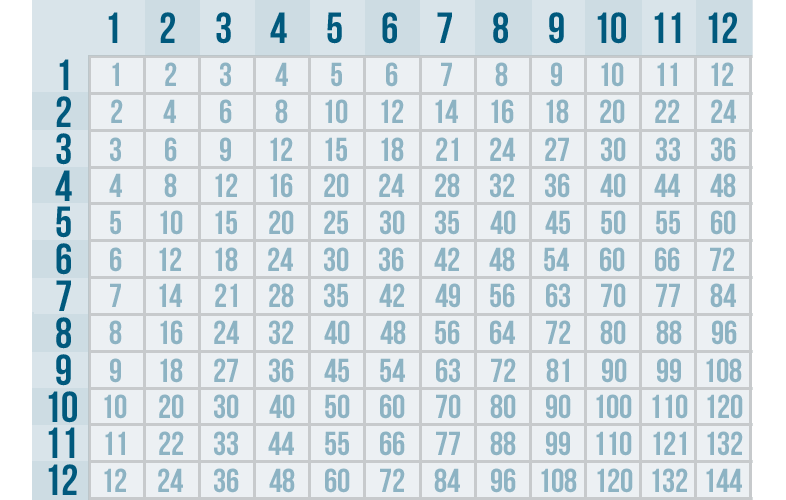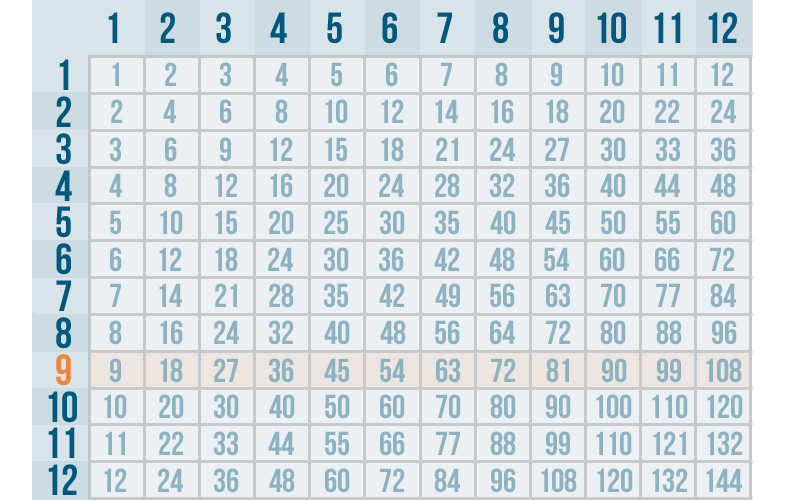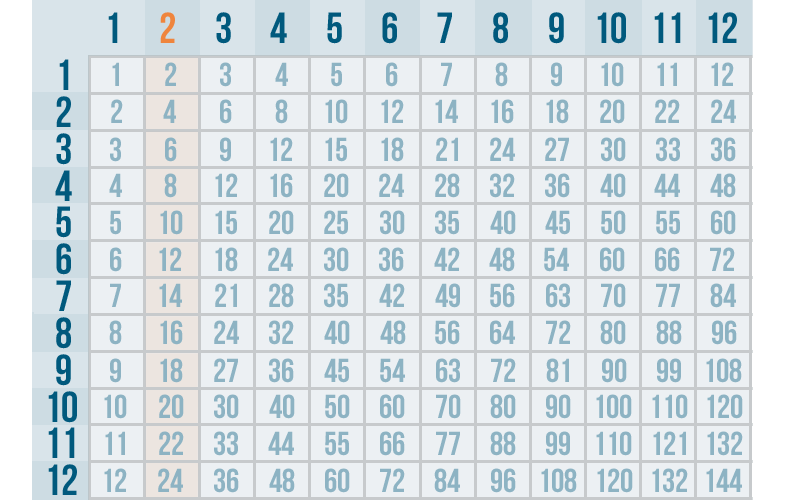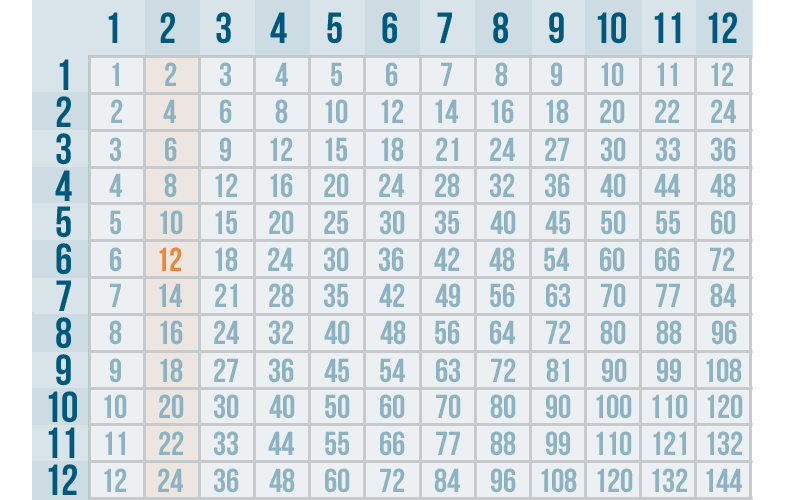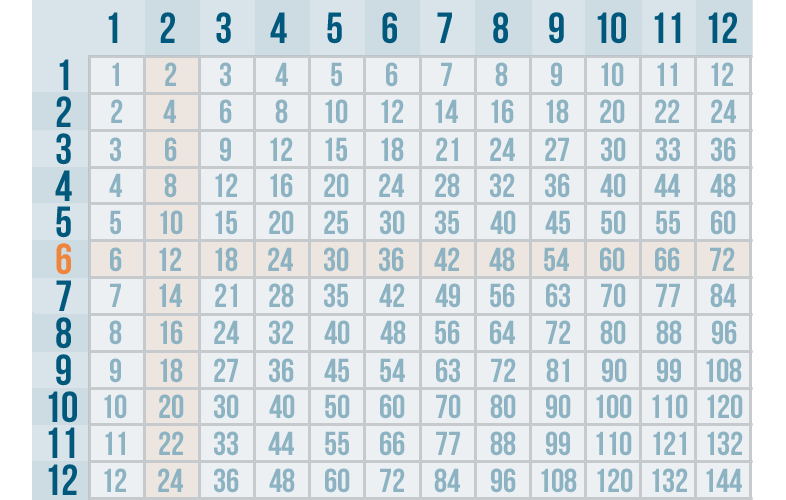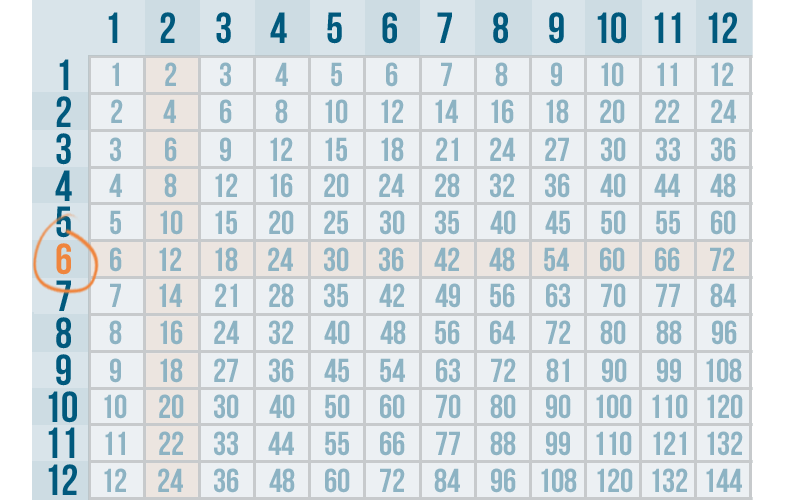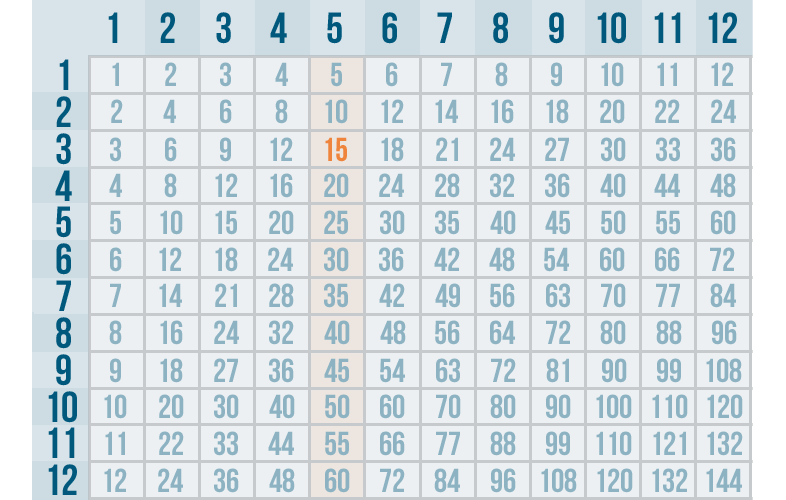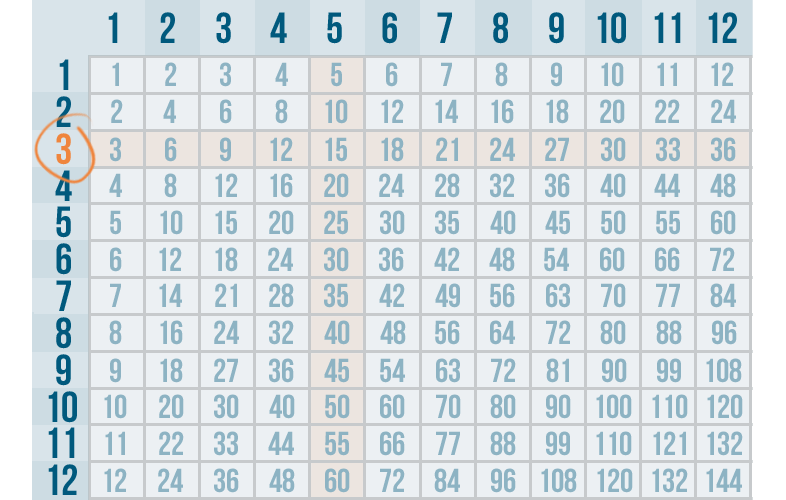Multiplication and Division
Introduction to Division
Solving Division Problems
You can use counting to solve simple division problems. For instance, let's say we have 12 seedlings. We decide to plant them in two even rows. How many plants go in each row? We could write that question like this:
12 / 2
Remember, that expression means 12 divided by two, or 12 seedlings divided into 2 rows. It's a simple problem. To solve it, you can put the seedlings into two groups and then count how many plants are in each group. The answer is 6. We know that 12 / 2 = 6.
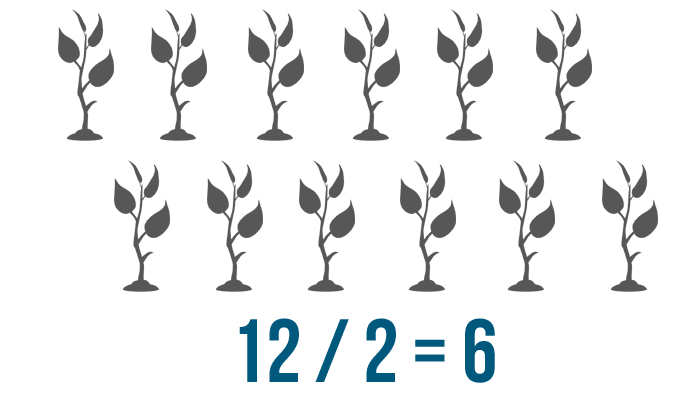
While counting works for problems that begin with small numbers, a problem that begins with a large number can take a long time to solve with counting. For this reason, most people memorize common division problems so that they can solve them quickly. If this sounds hard, don't worry. With some practice, you'll be able to quickly remember the answers.
In lesson 1, you were introduced to the times table. In that lesson, you used it to solve multiplication problems. You can also use the times table to solve division problems.
Let's start with a problem we're already familiar with. How would we have solved the seedling problem with the times table?
Click through the slideshow below to learn how.
Practice solving division problems using the times table.
Now you try it. Solve these division problems. If you need some help, you can use the times table.



